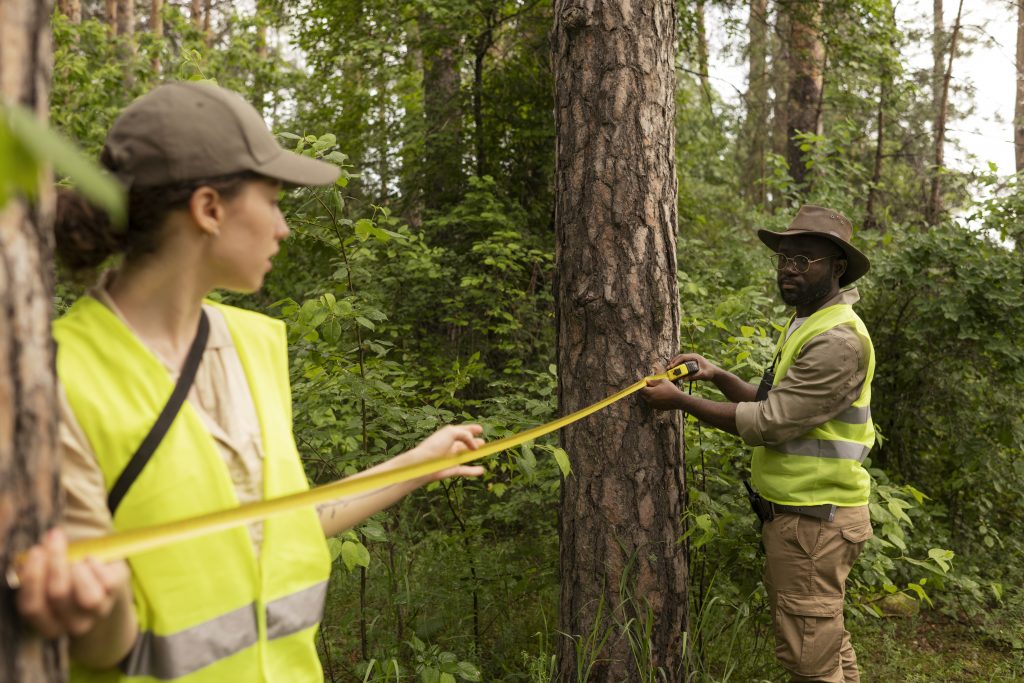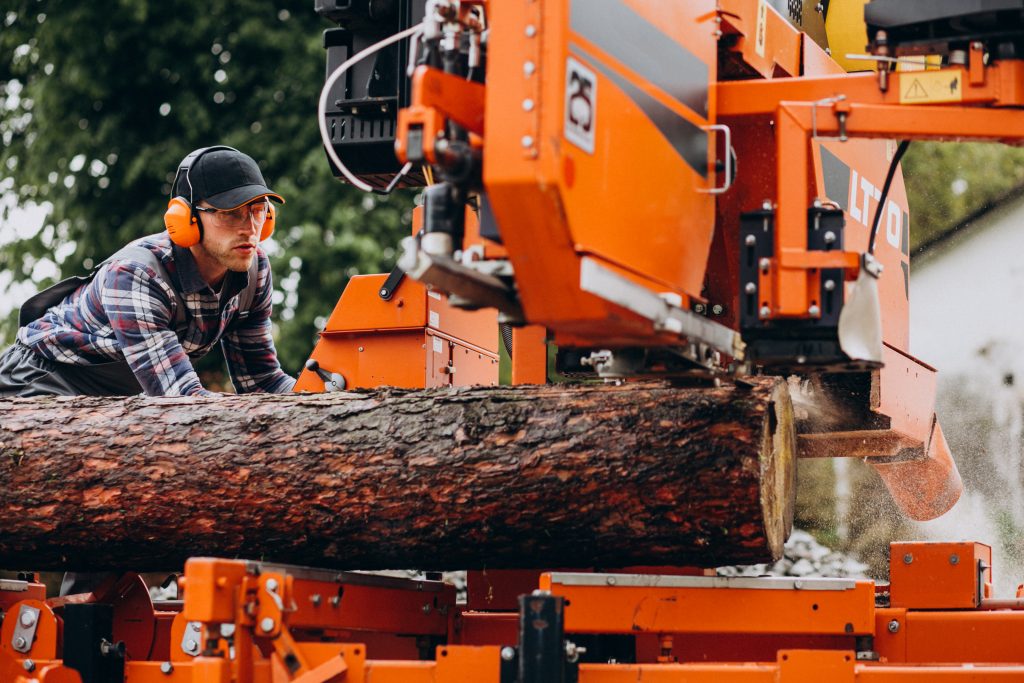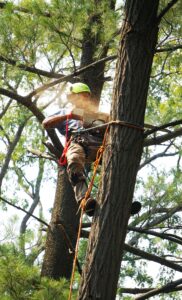What Education Do Tree Service Technicians Have?
The Comprehensive Education of Tree Service Technicians: Cultivating Expertise in Arboriculture and Environmental Stewardship

In the sprawling realm where nature and urban landscapes intersect, the vital role of tree service technicians becomes apparent. These skilled professionals undertake the essential task of preserving, caring for, and maintaining trees and shrubs in various environments, contributing significantly to the health, safety, and aesthetics of properties and communities. A career as a tree service technician is not merely a job; it’s a dedication to environmental well-being and customer satisfaction.
The Evolution of a Tree Service Technician’s Role: From Roots to Canopy
The career of a tree service technician has expanded over the years, evolving from rudimentary tree care practices to a highly specialized field requiring a diverse skill set. The intricate balance between nature, property, and human interaction has elevated the significance of their role, prompting the need for comprehensive education and training.
Formal Education and Training Programs
The journey to becoming a proficient tree service technician begins with a foundation in formal education. Many professionals in the field start with a high school diploma, the gateway to pursuing more advanced educational pathways. Aspiring technicians can choose from a range of degree programs, including forestry, environmental science, horticulture, and urban forestry.
Local colleges and universities often offer associate and bachelor’s degree programs tailored to arboriculture and related disciplines. Institutions like Murray University offer specialized programs that combine classroom instruction with practical experience, preparing students for the challenges of the industry. These programs cover a wide array of subjects, from tree biology and health to equipment operation and safety protocols.
On-the-Job Training: Nurturing Skills Amidst the Leaves
While formal education lays the groundwork, on-the-job training is the crucible where theoretical knowledge transforms into practical expertise. Tree service technicians often undergo extensive training with established companies or under the guidance of experienced professionals. This hands-on experience equips technicians with the ability to operate specialized equipment, assess tree health, diagnose diseases, and execute safe tree removal and pruning techniques.
The pivotal nature of on-the-job training is exemplified by Truco Services, Inc., a reputable tree service company in Murray, Utah. Under the tutelage of industry veterans like Michael Sands, aspiring technicians gain insights into the nuances of tree care, customer service, and environmental preservation.
A Multifaceted Skill Set: Beyond Chainsaws and Climbing Harnesses
The modern tree service technician is a versatile individual, requiring a diverse range of skills to excel in their role. Technical aptitude in equipment operation, from chainsaws to cranes, is paramount. However, effective communication and customer service skills are equally crucial, as technicians frequently interact with property owners to provide expert advice and ensure client satisfaction.
Safety also takes center stage in a tree service technician’s skill set. Handling heavy machinery, working at heights, and navigating potentially hazardous situations demand a keen awareness of health and safety protocols. Arborists must be well-versed in assessing the risks posed by power lines, unstable branches, and other potential hazards.
The Arboreal Academia: Beyond Traditional Education
The tree service technician’s pursuit of knowledge extends beyond formal education and on-the-job training. The dynamic nature of the field requires technicians to stay abreast of the latest industry advancements, safety regulations, and environmental practices. Continuing education opportunities, workshops, and seminars provide avenues for professionals to enhance their expertise and adapt to evolving industry standards.
Diverse Specializations: Branching Out in the Tree Service Industry
The realm of tree service is not limited to tree removal and pruning. Tree service technicians can specialize in various niches, each with its unique demands and challenges. Urban forestry, for instance, focuses on managing trees in urban environments to enhance air quality, mitigate the urban heat island effect, and foster green spaces within cities. Greenhouse technicians specialize in nurturing trees and shrubs within controlled environments, ensuring their optimal growth and health.
The Green Investment: A Tree Service Technician’s Worth
The value of a proficient tree service technician extends beyond immediate tasks. These professionals contribute to the overall worth of a property by enhancing its visual appeal, creating a safer environment, and maintaining the health of trees and shrubs. The economic benefits of tree care are often underestimated, with studies indicating that well-maintained trees can increase property values by as much as 10%.
Moreover, the environmental impact of tree service technicians is immeasurable. Their dedication to preserving and nurturing trees contributes to a sustainable ecosystem, improving air quality, and fostering biodiversity. By playing a pivotal role in carbon sequestration and mitigating the effects of climate change, tree service technicians become unsung heroes of environmental stewardship.
Looking Ahead: The Future of Tree Service Education
As the field of tree service continues to evolve, education and training will remain fundamental. The integration of technology, such as drone-assisted tree assessments and advanced diagnostic tools, will redefine the way technicians approach their tasks. Additionally, increasing awareness of environmental issues and the benefits of urban green spaces will drive demand for skilled professionals who can navigate the complex intersection of nature and urbanization.
In conclusion, the education of tree service technicians encompasses a diverse array of subjects, from formal degrees in forestry to hands-on training in the field. These professionals play a pivotal role in preserving the environment, enhancing property values, and ensuring the safety and beauty of our surroundings. As trees continue to stand as stars in our natural world, tree service technicians will stand as the guardians of their health and well-being, leaving an enduring legacy for generations to come.
About Murray, Utah
Murray is a city situated on the Wasatch Front in the core of Salt Lake Valley in the U.S. state of Utah. Named for territorial governor Eli Murray, it is the state's fourteenth largest city. According to the 2020 census, Murray had a population of 50,637. Murray shares borders with Taylorsville, Holladay, South Salt Lake and West Jordan, Utah. Once teeming with heavy industry, Murray's industrial sector now has little trace and has been replaced by major mercantile sectors. Known for its central location in Salt Lake County, Murray has been called the Hub of Salt Lake County. Unlike most of its neighboring communities, Murray operates its own police, fire, power, water, library, and parks and recreation departments and has its own school district. While maintaining many of its own services, Murray has one of the lowest city tax rates in the state.
Neighborhoods in Murray, Utah
Murray Oakes, Grant Park, Southwood Park, Murray Park, Murray Park Restrooms, Willow Pond Park, Neighborhood Veterinary Care
Things To Do in Murray, Utah
Bus Stops in Murray, Utah to Truco Services, Inc.
Bus Stop in Murray Central Station (Bay C) Murray, Utah to Truco Services, Inc.
Bus Stop in State St @ 4801 S Murray, Utah to Truco Services, Inc.
Bus Stop in Murray North Station Murray, Utah to Truco Services, Inc.
Bus Stop in State St @ 4949 S Murray, Utah to Truco Services, Inc.
Bus Stop in Murray Central Frontrunner/Trax Station Murray, Utah to Truco Services, Inc.
Bus Stop in Murray Blvd / Vine St (SB) Murray, Utah to Truco Services, Inc.
Bus Stop in State St @ 3925 S Murray, Utah to Truco Services, Inc.
Bus Stop in State St @ 4824 S Murray, Utah to Truco Services, Inc.
Bus Stop in State St @ 5223 S Murray, Utah to Truco Services, Inc.
Bus Stop in Murray Blvd / Allendale Dr (NB) Murray, Utah to Truco Services, Inc.
Bus Stop in Murray Blvd @ 5039 S Murray, Utah to Truco Services, Inc.
Bus Stop in State St @ 4721 S Murray, Utah to Truco Services, Inc.
Driving Directions in Murray, Utah to Truco Services, Inc.
Driving Directions from Woodruff Tree Trimming and Removal to 4640 Commerce Dr, Murray, UT 84107, USA
Driving Directions from Reliable Tree Care to 4640 Commerce Dr, Murray, UT 84107, USA
Driving Directions from Tree Pro-Tech to 4640 Commerce Dr, Murray, UT 84107, USA
Driving Directions from Prestige Tree And Landscape to 4640 Commerce Dr, Murray, UT 84107, USA
Driving Directions from Excellence Tree & Landscape to 4640 Commerce Dr, Murray, UT 84107, USA
Driving Directions from Amen Trees to 4640 Commerce Dr, Murray, UT 84107, USA
Driving Directions from Tim's Tree Care to 4640 Commerce Dr, Murray, UT 84107, USA
Driving Directions from Jordan Tree Service - Murray to 4640 Commerce Dr, Murray, UT 84107, USA
Driving Directions from Arbor Works to 4640 Commerce Dr, Murray, UT 84107, USA
Driving Directions from Diamond Tree Experts to 4640 Commerce Dr, Murray, UT 84107, USA
Driving Directions from Green Tree Arborist to 4640 Commerce Dr, Murray, UT 84107, USA
Driving Directions from TruCo Services to 4640 Commerce Dr, Murray, UT 84107, USA
Reviews for Truco Services, Inc. Murray, Utah
Emily Abercrombie
We had a great experience with TruCo! They were well priced, responsive and prompt. Michael was a pleasure to work with and gave us advice on which plants to put in where we took out our ugly old shrubs. I would highly recommend this company!!!
Michelle Turpin
TruCo Services gets 5 stars from us for customer service. We experienced a few issues with their services this last year and Rob Eccles in senior management, stepped in and immediately handled our issues. He was very committed to making sure they understood our expectations and would execute to make us happy.
Siobhan Billingsley
I work for a property management company and have the pleasure of working with Rob at a community in Sandy. He has been incredible to work with and always responds in a timely manner. He knows all the homeowners by name and address and is aware of all the "problem" areas when it comes to sprinklers. I never have to worry about following up with him because he always reaches out to provide me with an update. If you're looking to work with someone who takes pride in their job, is professional, and can solve the worst landscaping problems thrown your way, Rob is your guy. Thank you, Rob for all you do!
Jaime S.
We have used Truco at 2 of the complexes we manage, they have been great to work with. Good quality service, outstanding customer service with good communication. That's hard to find these days. I highly recommend them. Travis has been awesome to work with.
Jerusha Smart
We use TruCo for a majority of our properties and our home. While other landscaping companies we use come and go for various reasons like cost, communication issues, work performance, etc., TruCo is always consistent in price and work. Also, Rob is the best.


